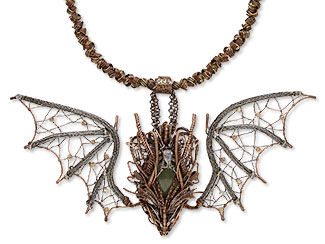Bib-Style Necklace
Channel your inner dragon with this fierce wirework necklace, featuring bold gemstone cabochons, Crystal Passions® elements and a striking dragon motif.


